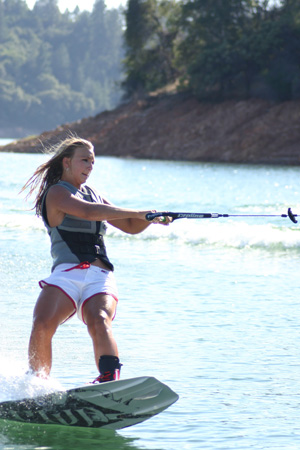Advertisement
Advertisement
How to Wakeboard
Starting with the basics, we’ll help you make your first breakthrough in learning how to wakeboard.
March 24, 2020
Wakeboarding is fun—really fun—but figuring out how to first get up on a wakeboard can sometimes present quite a challenge. With a little patience and a couple of minutes spent studying these tips, you’ll be riding the wakes in no time. Before we go into the all details, let’s start with the fundamentals.
Basic steps when learning how to wakeboard:
- Start floating on your back directly behind the center of the boat with both feet strapped into the bindings on top of the wakeboard.
- Keep your knees bent with your elbows tucked in close to your side as you hold the towrope close to the middle of your chest.
- Make sure the towrope is pulled tight and stretched all the way out between you and the back of the boat.
- When the boat starts to move, you’ll begin to feel the rope pulling you forward. When this happens, slightly apply a little pressure with your feet and allow the boat to do most of the work to pull you into sideways standing position.
- Once you’re up, keep most of your weight balanced on your back leg as you ride.
- To steer the board, apply pressure to either your heels or your toes—depending on what direction you’d like to move.
- After getting comfortable, try steering yourself in and out of the wake. Remember to your keep your knees bent as you move over the wake or as you go through rough areas of water.
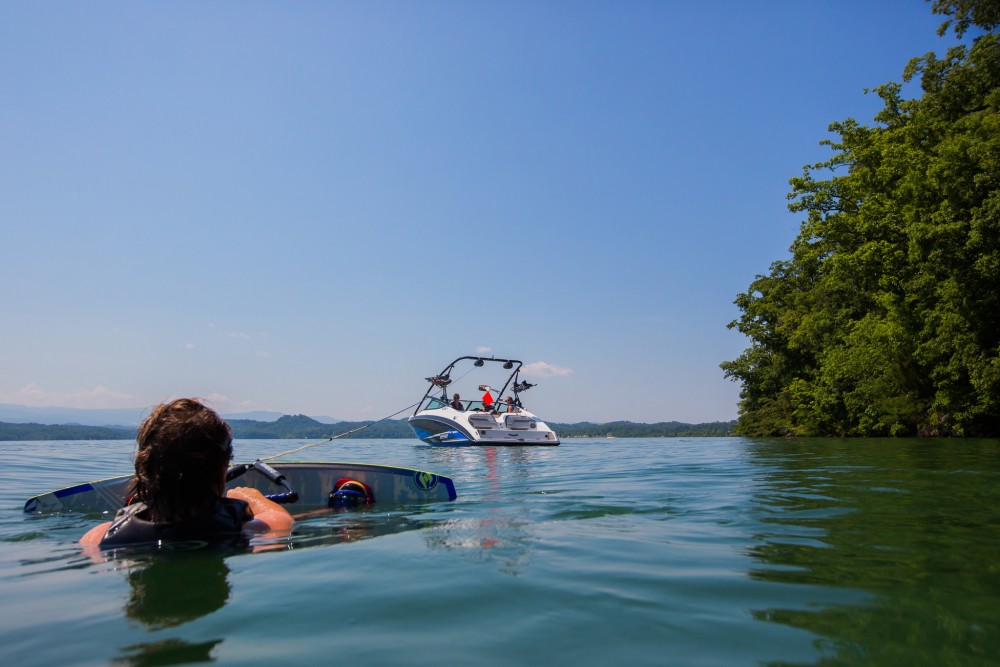
Regular or Goofy?
Before you jump into wakeboarding, it’s important to be sure of one element: are you regular or goofy? And when we say goofy, we’re not talking about the cartoon character. The terms regular and goofy refer to your riding preference—do you ride with your left or right foot forward? If you ride regular, it means that you ride with your left foot forward. If you ride goofy, then it's your right foot. There are a couple of different ways to determine whether you should ride with a regular or goofy stance. Generally, if you have experience skateboarding or snowboarding, then you may already know what stance you ride with; however, there are rare cases where your stance can vary between the different sports. Another way to determine whether you are regular or goofy is to walk up a staircase. Starting at the bottom, which foot do you use to step up onto the first step? This foot is most likely your back foot.
You can also determine your stance with the help of a friend—preferably one who isn't into pulling pranks. As you stand up straight with your feet relatively close together, ask your friend to stand behind you and give you a gentle shove in the back. Which foot did you instinctively move to catch your balance? That foot should be placed at the back of the wakeboard. As a general rule, most wakeboarders who are right-handed tend to ride regular, but that doesn’t mean there aren’t exceptions.
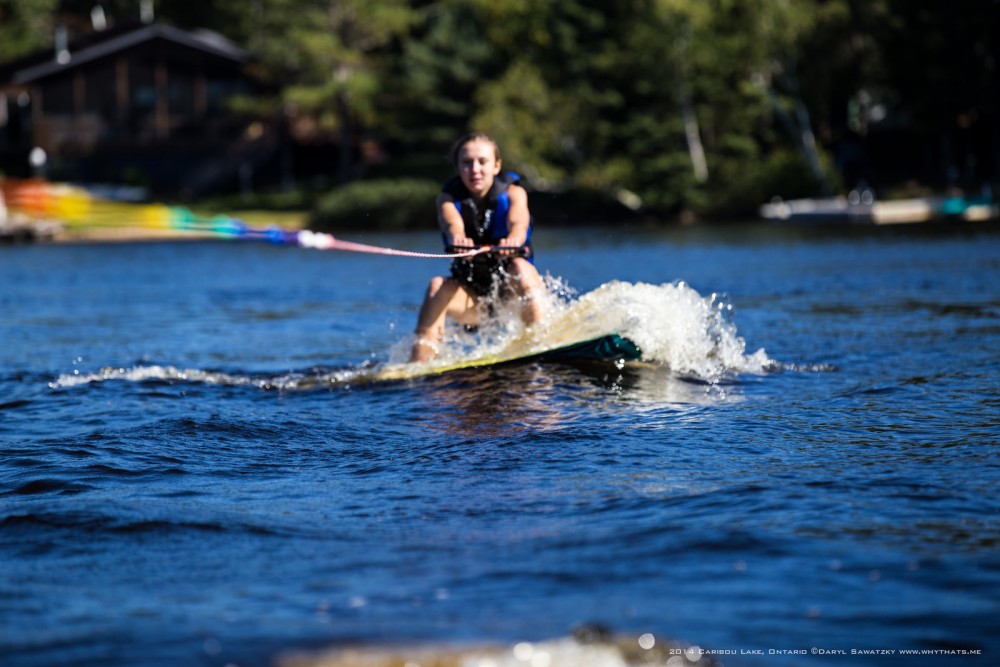
While it may seem like something minor, attempting to ride with the wrong foot forward can actually make the process of learning how to wakeboard even more challenging than it already is. So if you feel like you’ve hit a brick wall when you’re first trying to get up on the board, it won’t hurt to test out riding with your other foot forward—it just might make all the difference.
Finding the right equipment
Once you’ve determined your stance, you should next double check that you have the right equipment. Like most watersports, you’ll need four main things: a boat, a towrope, a lifejacket, and (of course) a wakeboard. The good news is that it’s possible to wakeboard behind almost any kind of boat—a bowrider, runabout and even a pontoon—although using a tow-boat that’s specifically designed for watersports can definitely make the process a lot better, thanks to the added ballast capacity and the addition of a ski pylon or watersports tower.
Regardless of what style of boat you’re on, using a shorter rope can also make a huge difference when you’re first learning to wakeboard. While longer towropes will still do the trick, shorter ropes don’t move up and down in the wind or slap the water as much, which can throw off a rider’s balance. A towrope measuring about 45’ to 50’ is a good length for beginners to start off with.
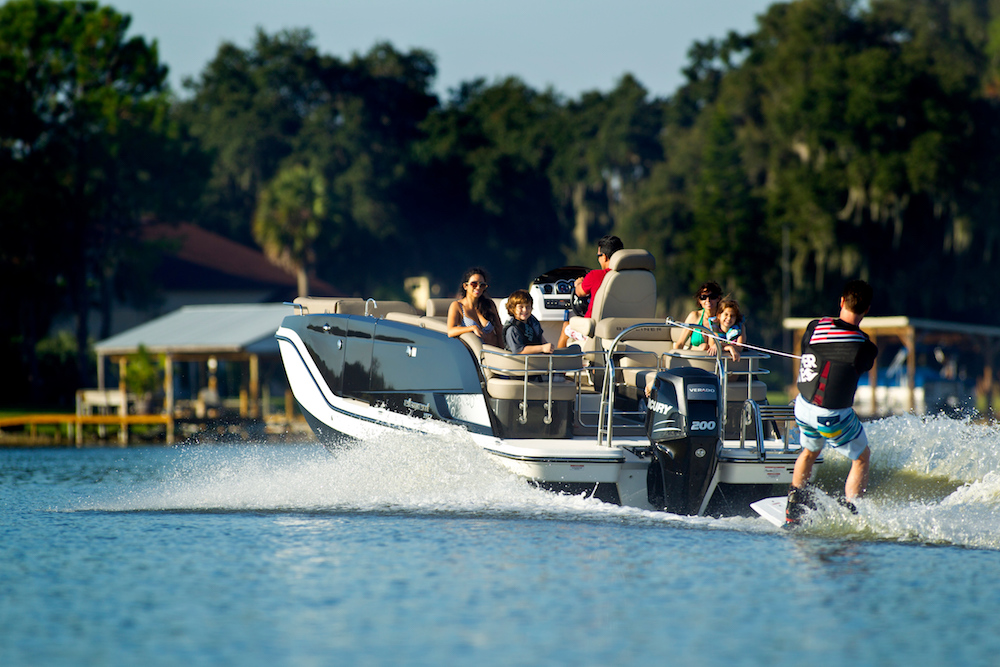
When it comes to life jackets (also known as PFDs, or “personal floatation devices”), there’s no need to be picky. Any standard PFD will work great for wakeboarding as long as it keeps you afloat. You have the option of the standard front zip style life jacket, or, if you’d like to take the extra step towards extreme comfort, there are pullover-style PFDs that are specifically designed for wakeboarding and other watersports.
It’s also important to make sure that you’re using the right size board for your weight and skill level. Longer wakeboards tend to be easier to ride on and are ideal for new riders, while shorter wakeboards are slower but easier to spin and perform tricks on as you flip or jump across the wake. Your weight is also a factor here. Take a look at the chart below to find the right length for your weight class.
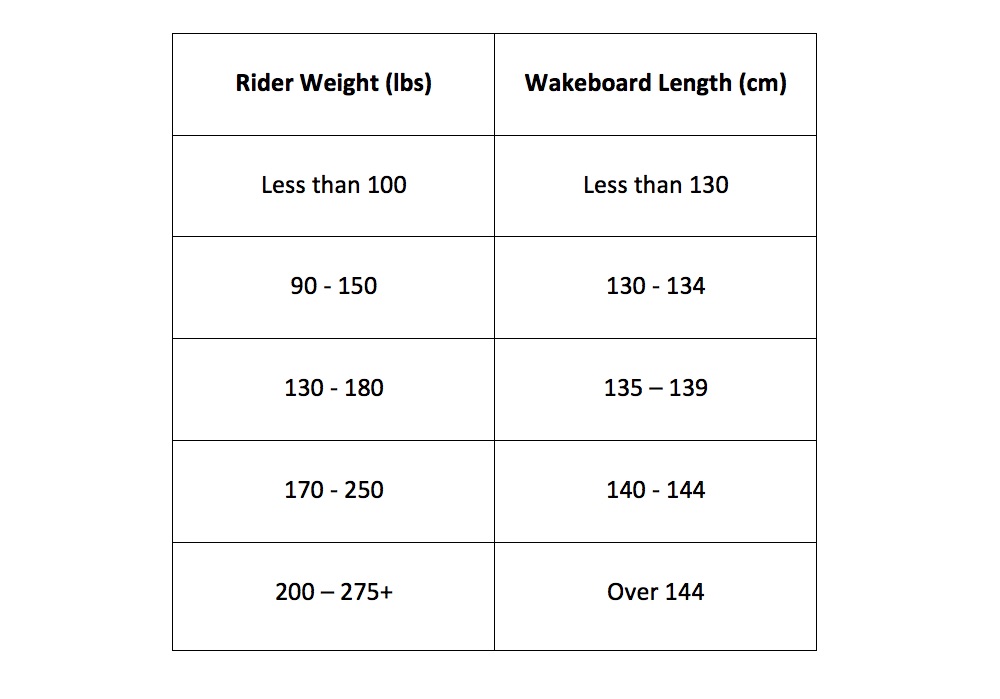
Communicating with your driver and spotter
If you’re all stocked up with correct gear, then it’s time to jump in and get going. Talk to your driver and spotter before you start to set up hand signals you can use to communicate while you’re being towed behind the boat. Generally, a thumbs-up means you should go faster, while a thumbs down means slow down. Moving your hand across your neck means that you’re done with your ride and you want to stop.

Hand signals play a crucial role in communication between the wakeboarder, driver, and spotter. Take a look at USA Water Ski's breakdown of the seven main hand signals used for watersports, and feel free to download the full PDF for all their tips and tricks.
If your driver has never pulled someone on a wakeboard before, it’s also important to talk to him or her about speed. To start off, the driver should gradually increase the speed of the boat until you’ll able to fully get up on the board. Even after you’re up, they should keep the boat moving at a speed that you feel comfortable with—going too fast can make wakeboarding very difficult, especially for newbies. A good rule of thumb is to keep the speed around 16 to 20 MPH.
Once your driver and spotter are all set, you’re ready to ride. As you build your confidence, test your skills by trying a few tricks, like small jumps or a move called carving, which is a sharp turn outside the wake that gives off a spray of water behind the board.
Wakeboarding is just one of many sports in an extensive watersports lineup, and you can read about the rest in Watersports: All Things Towable. And don’t forget to freshen up on your wakeboarding IQ by reading our Essential Tow-Boat Glossary.
Advertisement
Advertisement








